How to Grow Rosemary: Expert Tips for Thriving Plants
- March 28, 2024
- 0 comment
Learn how to grow Rosemary, Rosmarinus officinalis, a fragrant evergreen herb from the Mediterranean, valued for both its culinary and ornamental qualities. This guide will walk you through the steps of planting, nurturing, and harvesting rosemary, making it a rewarding addition to any garden.

Benefits of Rosemary
| Benefit | Description |
|---|---|
| Cognitive Health | Rosemary has been associated with improved concentration, memory, and brain aging due to its antioxidant properties. It may also help in reducing the decline in brain function in older adults. |
| Rich in Antioxidants and Anti-inflammatory Compounds | Rosemary is loaded with antioxidants and anti-inflammatory agents, which help boost the immune system and improve blood circulation. |
| May Support Digestive Health | It’s traditionally used to help alleviate muscle pain, improve memory, boost the immune and circulatory system, and promote hair growth. |
| Hair Growth | Applying rosemary oil to the scalp is believed to stimulate hair growth and prevent baldness, slow graying, and treat dandruff and dry scalp. |
| Stress Relief | The aroma of rosemary has been linked to improving mood, clearing the mind, and relieving stress in those with chronic anxiety or stress hormone imbalances. |
| Anti-cancer Properties | Some studies suggest that rosemary extract may have anti-cancer properties, inhibiting the growth of various human cancer cell lines. |
| Antimicrobial and Antiviral Properties | Rosemary extract has shown potential in reducing the growth of certain bacteria and viruses, potentially offering a natural alternative to traditional antibiotics and antiviral medications. |
| Skin Health | Its anti-inflammatory properties can help reduce swelling and puffiness of the skin. It also helps heal burns and soothe the skin. |
List on How to Grow Rosemary
- Selecting the Right Variety
- Planting Rosemary
- Watering and Feeding
- Pruning and Maintenance
- Harvesting Rosemary
- Overwintering Rosemary
Selecting the Right Variety
There are several varieties of rosemary, each with unique characteristics. Some are suited for culinary use, while others are better for ornamental purposes. Popular varieties include ‘Arp’, which is known for its cold-hardiness, and ‘Tuscan Blue’, prized for its rich flavor.
Arp
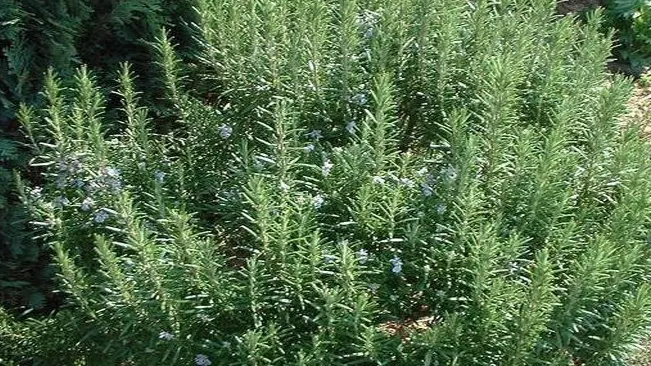
- Climate Adaptation: One of the most cold-hardy varieties, ‘Arp’ can survive in colder climates where other rosemary varieties might struggle.
- Growth and Appearance: It grows into a large bush with a somewhat upright habit. The leaves are grayish-green, and the plant typically blooms with light blue flowers.
- Usage: Ideal for culinary uses, especially in recipes that require a robust flavor.
Tuscan Blue
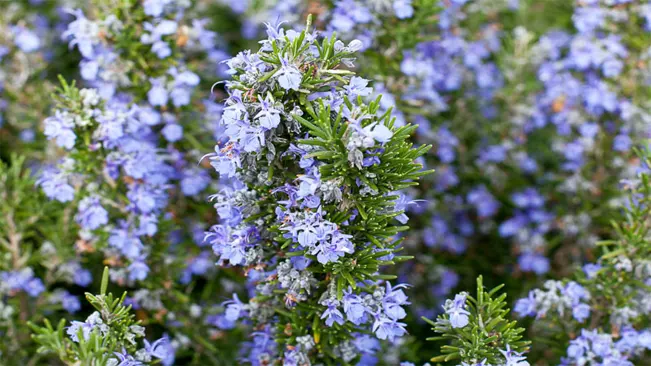
- Flavor Profile: Known for its strong and rich flavor, which is perfect for culinary uses, particularly in Italian cuisine.
- Growth and Appearance: It features striking, deep blue flowers and upright growth, making it an excellent choice for both kitchen gardens and ornamental purposes.
- Climate Suitability: Best suited for regions with a Mediterranean climate but quite adaptable.
Prostratus (Creeping Rosemary)
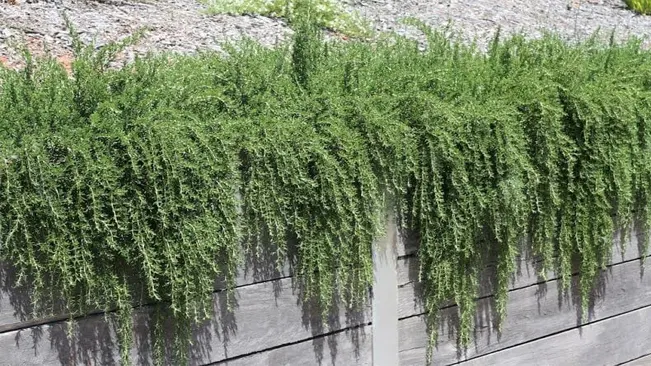
- Growth Habit: As the name suggests, this variety grows low to the ground and spreads outwards, making it an excellent choice for ground covers or hanging baskets.
- Flower Appearance: It blooms with pale blue to white flowers.
- Usage: While it can be used in cooking, it’s often chosen for its ornamental value.
Salem

- Growth and Appearance: It has a compact growth habit and is known for its tolerance to humidity, making it a good choice for areas with more moisture.
- Usage: ‘Salem’ is often used in cooking and as an ornamental plant.
Miss Jessup
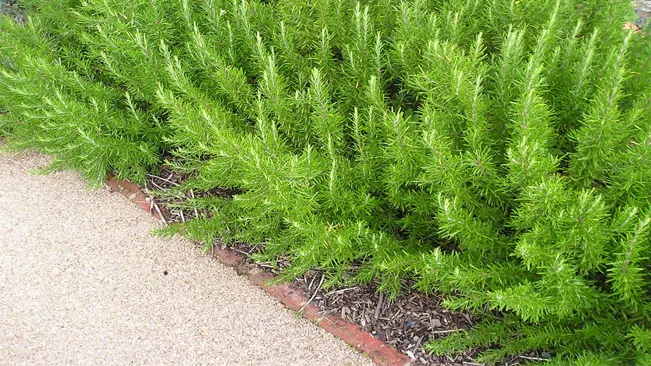
- Growth: Upright in its growth and quite robust.
- Climate Adaptation: Good for colder climates and can withstand winter better than some other varieties.
- Usage: Widely used in cooking for its flavor.
Majorca Pink
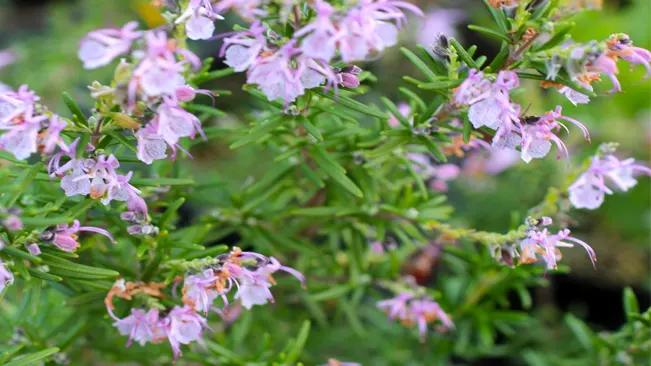
- Flower Color: Unique for its lovely pink flowers, adding a decorative touch to gardens.
- Growth: Tends to have a more sprawling habit.
- Usage: More ornamental than culinary due to its distinct flowering.
Spice Islands
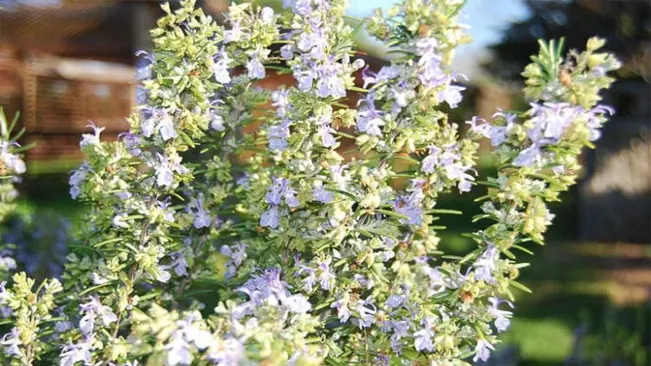
- Flavor Profile: Known for its strong aroma and flavor, making it highly prized in culinary uses.
- Growth: Grows upright and can be quite bushy.
Things to Consider When Choosing a Variety
- Climate and Environment: Consider your local climate and whether it matches the growing conditions of the rosemary variety. ‘Arp’, for example, is great for colder areas.
- Culinary vs. Ornamental Use: Decide whether you’re growing rosemary primarily for cooking or as a decorative plant. Varieties like ‘Tuscan Blue’ are excellent for culinary purposes, while ‘Prostratus’ is great for ornamental use.
- Space and Growth Habit: Consider the space where you’ll plant the rosemary. Some varieties spread out more and are suitable for ground cover, while others grow upright and are better for compact spaces.
Planting Rosemary
Choosing the Location
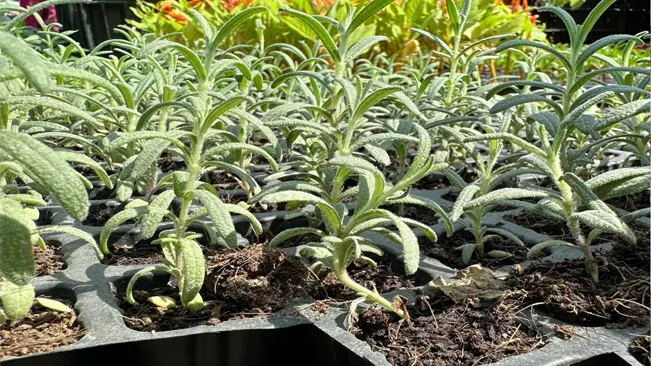
- Sunlight Requirements: Rosemary requires a lot of sunlight. The ideal spot for planting is where it can receive at least 6 to 8 hours of direct sunlight daily. A south-facing location usually provides the most consistent sun exposure throughout the day.
- Soil Drainage: Good drainage is crucial as rosemary does not tolerate soggy roots well. The plant is native to the Mediterranean, where the soil tends to be sandy and drains quickly.
Soil Preparation
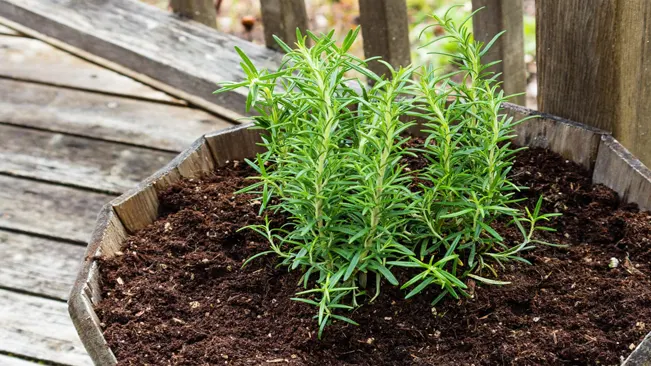
- Soil Type: Although rosemary can tolerate a range of soil types, it grows best in soil that is slightly sandy or loamy.
- pH Level: Rosemary prefers a neutral to slightly alkaline soil pH, between 6.0 and 7.5.
- Improving Drainage: If your soil is heavy or clay-like, amending it with organic matter like compost or well-rotted manure can significantly improve drainage. You can also mix in some sand to further enhance drainage capabilities.
- Testing Soil: It’s a good idea to test your soil before planting. This can be done with a home testing kit, available at most garden centers. It gives you a better understanding of your soil type and what amendments it might need.
Planting Time
- Mild Winters: In areas with mild winters, planting rosemary in the fall is advantageous because it allows the plant to establish itself during the cooler months, preparing it for summer growth.
- Colder Climates: In regions with harsh winters, it’s better to plant rosemary in the spring after the danger of frost has passed. This timing prevents the young plants from being damaged by freezing temperatures.
- Transplanting: If starting rosemary indoors or purchasing a plant from a nursery, ensure that all risk of frost has passed before transplanting it outside.
Watering and Feeding
Watering Rosemary
Rosemary is native to the Mediterranean region, which means it is well adapted to a dry, somewhat arid climate. Here are some key points to consider for watering:
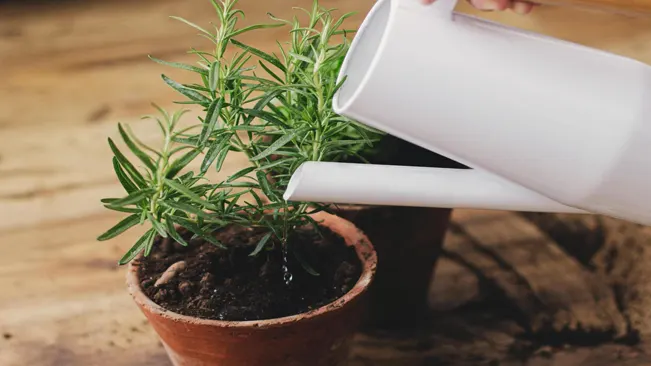
- Moderation is Key: Rosemary does not require a lot of water. The key is to water the plant deeply but infrequently.
- Check Soil Moisture: Before watering, check the soil. If the top inch of soil is dry, it’s time to water. This method helps avoid overwatering.
- Drainage is Crucial: Ensure that the plant’s soil has good drainage. Poor drainage can cause root rot, which is detrimental to rosemary.
- Watering in Different Seasons: Watering needs may vary with seasons. In summer, the plant may require more frequent watering compared to winter, especially if it’s in a pot.
- Watering Newly Planted Rosemary: New plants need more consistent watering to establish their roots. Once established, you can reduce the frequency.
Feeding Rosemary
Fertilizing rosemary isn’t usually necessary, especially if it’s planted in the ground. However, if you decide to feed your rosemary, here are some tips:
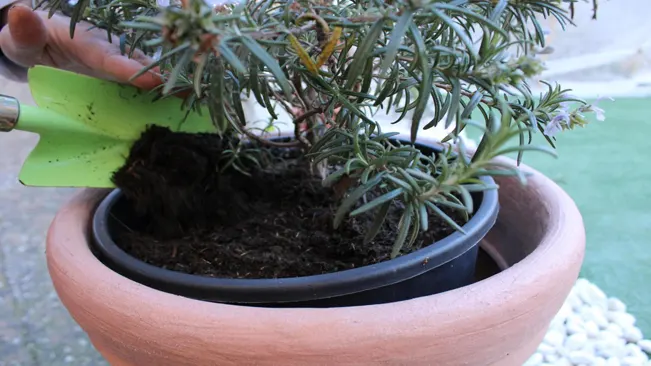
- Use Balanced Fertilizer: If needed, use a balanced, slow-release fertilizer. Something with equal parts nitrogen, phosphorus, and potassium (like a 10-10-10 formula) is suitable.
- Fertilize Sparingly: Over-fertilizing can do more harm than good. Excess nutrients can lead to lush foliage with diminished flavor and aroma.
- Best Time to Fertilize: The best time to apply fertilizer is in spring as the plant begins active growth.
- Container Plants: Rosemary plants in containers may benefit from a light feed since they don’t have access to the nutrients present in garden soil.
- Organic Options: Alternatively, you can use organic options like compost or fish emulsion, but again, sparingly.
Pruning and Maintenance
Pruning
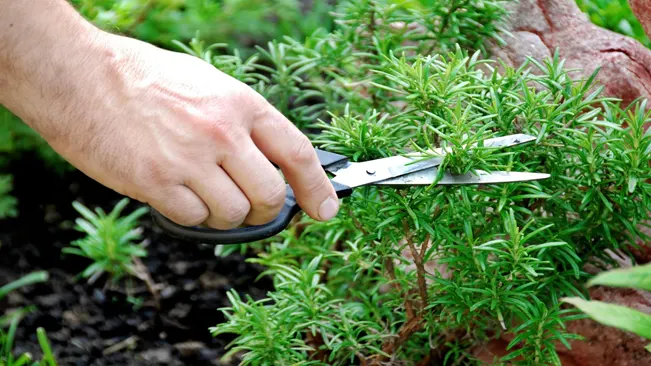
- Why Prune: Pruning not only maintains the shape and health of the rosemary plant but also encourages new growth. Regularly pruned rosemary is typically more robust and has a denser foliage, which is desirable for both culinary and aesthetic purposes.
- When to Prune: The best time to prune rosemary is in early spring, just as new growth begins. However, light pruning can be done throughout the growing season.
- How to Prune
- For Regular Maintenance: Use sharp, clean shears and snip about 2-3 inches off the tips of the stems. This helps the plant become bushier.
- For Shaping: If you’re growing rosemary as a hedge or in a particular shape, more strategic pruning may be necessary. Shape the plant, but avoid cutting into old wood, as rosemary can be slow to regrow from old wood.
- Harvesting and Pruning: Harvesting sprigs of rosemary can double as light pruning. Cut the stem just above a leaf joint or node.
Pest and Disease Control
Common Issues
- Spider Mites: These tiny pests can cause the foliage to yellow and become speckled. They thrive in dry, hot conditions.
- Powdery Mildew: This appears as a white powdery coating on leaves and stems, often in humid conditions.
Control Strategies
- Preventive Measures: Healthy, well-cared-for plants are less susceptible to pests and diseases. Proper spacing, adequate sunlight, and good air circulation are key.
- Organic Solutions:
- Neem Oil: An effective, organic option for a variety of issues, including spider mites and mildew. It’s a natural insecticide and fungicide.
- Insecticidal Soap: Useful for treating mite infestations. It’s safe for the plant and beneficial insects when used as directed.
- Monitoring: Regularly inspect your rosemary plants for signs of stress, pests, or disease. Early detection makes management much easier.
Harvesting Rosemary
When to Harvest Rosemary

- Established Growth: Harvest rosemary only after the plant has grown enough to be well-established. This typically means waiting until it’s at least 6 to 8 inches tall and has been growing for several months.
- Best Time of Day: The optimal time for harvesting is in the morning. After the dew has evaporated but before the midday sun, the essential oils in the rosemary are at their peak, enhancing the flavor and aroma.
- Seasonal Considerations: While rosemary can be harvested year-round in milder climates, growth slows in winter. Plan major harvests in late spring through early fall when the plant is most vigorous.
How to Harvest Rosemary
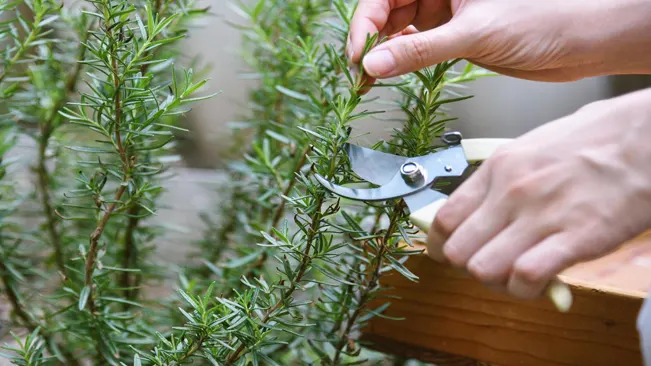
- Selecting Sprigs: Look for sprigs that are green, robust, and have not yet flowered. Flowering sprigs can also be harvested, but they may have a slightly different flavor.
- Cutting Technique: Use sharp scissors or garden shears to snip off the sprigs. Cut about 2-3 inches from the top of a stem, making the cut just above a leaf junction. This encourages the plant to branch from the cut point, promoting fuller growth.
- Avoid Overharvesting: Be careful not to harvest more than one-third of the plant at a time. Overharvesting can stress the plant and hinder its growth and health.
- Post-Harvest Care: After harvesting, it’s a good practice to water the plant and, if needed, fertilize it lightly to support new growth.
Using Harvested Rosemary

- Fresh Use: Freshly harvested rosemary is incredibly aromatic and can be used immediately in cooking. Its robust flavor is perfect for meats, bread, and Mediterranean dishes.
- Drying and Storage: To dry rosemary, hang the sprigs upside down in a warm, dry, and well-ventilated area. Once dried, store the leaves in an airtight container. Dried rosemary has a more concentrated flavor and a longer shelf life.
- Freezing: For longer preservation with a fresher flavor, rosemary can be frozen. Either freeze whole sprigs or chop the leaves and freeze them in ice cube trays with water or olive oil.
Propagating Rosemary
Selecting the Cutting
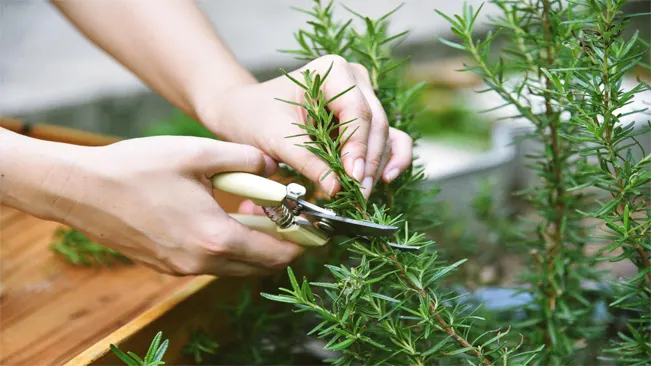
- Choose healthy, new growth from a mature rosemary plant. Look for stems that are not too woody or too green.
- The ideal cutting should be about 4-6 inches long. Cut just below a leaf node (the point where leaves grow out of the stem).
Preparing the Cutting

- Strip off the leaves from the bottom two-thirds of the cutting. This exposed area is where the roots will develop.
- Optionally, dip the cut end into a rooting hormone powder or gel. This can enhance rooting success but is not mandatory.
Planting the Cutting
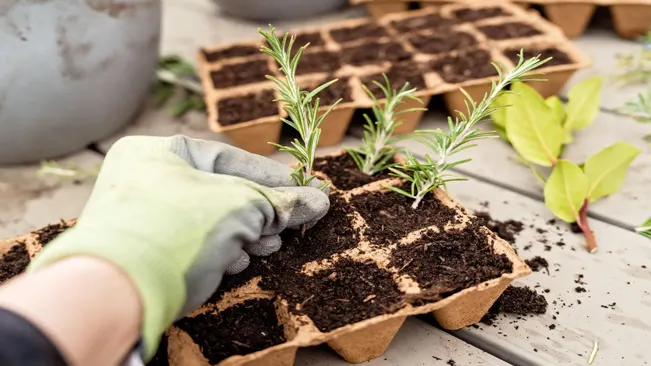
- Prepare a pot with a mixture of equal parts peat and coarse sand. This ensures good drainage, which is crucial for rosemary.
- Make a hole in the soil with a pencil or similar tool. This prevents the rooting hormone from being wiped off as you plant the cutting.
- Insert the cutting into the hole and gently firm the soil around it.
Creating the Right Environment
- Water the soil lightly. The goal is to keep the soil moist but not waterlogged.
- Place the pot in a warm, bright location but out of direct sunlight. Too much sun can stress the cutting before roots have developed.
- A humidity dome or a simple plastic bag over the pot can help maintain humidity, but ensure there’s some airflow to prevent mold growth.
Monitoring and Care
- Check the soil moisture regularly and water gently as needed. Avoid letting the soil dry out completely or become soggy.
- Rooting can take anywhere from 2-8 weeks, depending on conditions. Gently tug on the cutting after a few weeks; if there’s resistance, roots have likely formed.
- Once you see new growth, start acclimatizing the plant by gradually introducing it to more direct light.
Transplanting
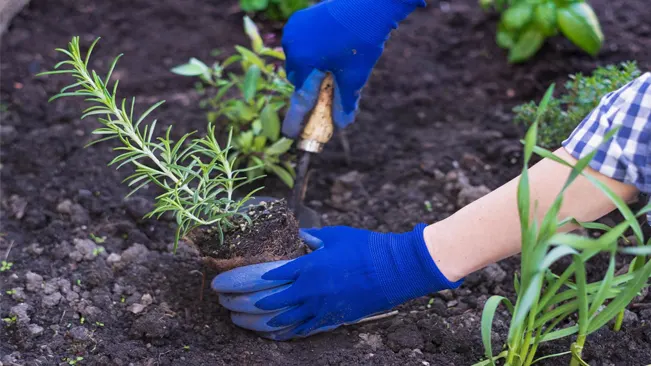
- After the cutting has established a good root system, you can transplant it into a larger pot or directly into the garden.
- Continue to care for it as you would a mature rosemary plant, ensuring plenty of sunlight, well-drained soil, and occasional watering.
Overwintering Rosemary
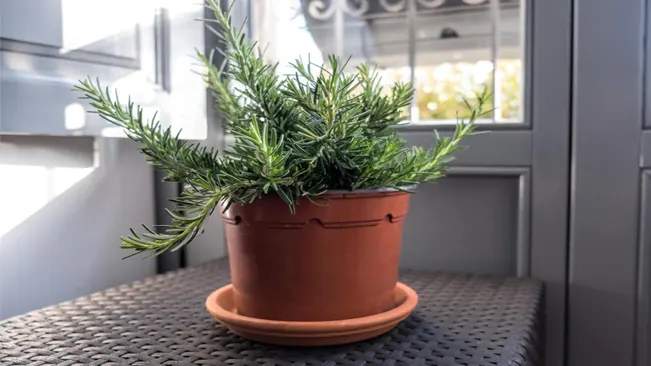
- Choose the Right Container: If you’re planting rosemary in a pot with the intention of bringing it indoors for the winter, make sure the container is large enough to accommodate growth but not so large that it’s cumbersome to move. The pot should have good drainage holes.
- Acclimatization: Before bringing your rosemary indoors, it’s essential to acclimate the plant to reduce shock. Start by moving the plant to a shaded area for a week, then bring it indoors to a cool, well-ventilated spot for a few days before placing it in its final indoor location.
- Selecting the Ideal Indoor Spot: Rosemary needs plenty of sunlight, so place it near a south-facing window where it can get at least 6 hours of sunlight. If this isn’t possible, consider using a grow light to supplement light.
- Watering Indoors: Overwatering is a common mistake when overwintering rosemary indoors. The indoor plant will require less water than it did outdoors. Let the soil dry out slightly between watering. Stick your finger about an inch into the soil; if it feels dry at this depth, it’s time to water.
- Humidity and Ventilation: Rosemary prefers a less humid environment, which can be challenging in some indoor settings, especially in winter when homes tend to be drier. Avoid placing the plant near humidifiers. Ensure good air circulation to prevent fungal issues.
- Temperature Management: While indoors, rosemary prefers cooler temperatures, ideally between 60-65°F (15-18°C). Avoid placing it near heat sources like radiators or vents, as fluctuating temperatures can stress the plant.
- Pruning: Prune rosemary lightly before bringing it indoors. This helps to control its size and encourages bushy growth. Avoid heavy pruning during winter, as the plant is not in an active growing phase.
- Pest Management: Keep an eye out for pests like spider mites or aphids. Indoor plants are more susceptible to such pests. If you notice pests, treat them with insecticidal soap or neem oil.
- Preparing for Spring: As winter ends, gradually reintroduce your rosemary to outdoor conditions. Reverse the acclimatization process – start by placing it outside in a shaded area for a few days and gradually increase its exposure to sunlight.
Related Post:
- How to Grow Mulberry
- How to Grow Horseradish
- How to Grow Daikon Radish
- How to Grow Zucchini
- How to Grow Oregano
Conclusion
Growing rosemary is a delightful and aromatic addition to any garden or home. With proper care, your rosemary plants will thrive and provide you with fresh herbs for cooking, aromatic oils, and a touch of Mediterranean charm. Remember, patience and attention to the specific needs of your plant will yield the best results.
FAQs (Frequently Asked Questions)
- What type of soil is best for rosemary?
- Rosemary thrives in well-drained, sandy, or loamy soil with a neutral to slightly alkaline pH.
- Rosemary thrives in well-drained, sandy, or loamy soil with a neutral to slightly alkaline pH.
- How much sun does rosemary need?
- Rosemary requires full sun, meaning at least 6-8 hours of direct sunlight per day.
- Rosemary requires full sun, meaning at least 6-8 hours of direct sunlight per day.
- Can rosemary be grown in pots?
- Yes, rosemary can be grown in pots. Ensure the pot is large enough and has good drainage holes.
- Yes, rosemary can be grown in pots. Ensure the pot is large enough and has good drainage holes.
- How often should I water rosemary?
- Water rosemary plants when the soil is dry to the touch. Overwatering can lead to root rot.
- Water rosemary plants when the soil is dry to the touch. Overwatering can lead to root rot.
- Is rosemary a perennial or an annual plant?
- Rosemary is a perennial herb in warmer climates (USDA zones 8 and above) but can be treated as an annual in colder regions.
- Rosemary is a perennial herb in warmer climates (USDA zones 8 and above) but can be treated as an annual in colder regions.
- How do I propagate rosemary?
- Rosemary can be propagated from cuttings. Take a 2-3 inch cutting from new growth and remove the leaves from the bottom inch. Plant in a mixture of sand and peat, keeping it moist until it roots.
- Rosemary can be propagated from cuttings. Take a 2-3 inch cutting from new growth and remove the leaves from the bottom inch. Plant in a mixture of sand and peat, keeping it moist until it roots.
- Can rosemary survive winter outdoors?
- In regions where temperatures drop below freezing, it’s best to grow rosemary in containers and bring them indoors during winter.
- In regions where temperatures drop below freezing, it’s best to grow rosemary in containers and bring them indoors during winter.
- How do I prune rosemary?
- Prune regularly to encourage bushy growth. Trim the tips of the shoots and remove any dead or woody stems.
- Prune regularly to encourage bushy growth. Trim the tips of the shoots and remove any dead or woody stems.
- When is the best time to harvest rosemary?
- You can harvest rosemary as soon as the plant is big enough. The best time for harvesting is in the morning after the dew has dried but before the sun is at its hottest.
- You can harvest rosemary as soon as the plant is big enough. The best time for harvesting is in the morning after the dew has dried but before the sun is at its hottest.
- What are common pests or diseases that affect rosemary?
- Rosemary is relatively pest-resistant. However, watch out for spider mites and powdery mildew. Good air circulation and avoiding overwatering can prevent most issues.

Kristine Moore
Forestry AuthorI'm Kristine Moore, a seasoned garden landscaping professional with over 30 years of experience. My extensive career has been dedicated to transforming outdoor spaces into stunning, sustainable landscapes. With a deep understanding of horticulture, design principles, and environmental stewardship, I have become a respected figure in the field, known for creating harmonious, visually appealing, and eco-friendly gardens. My commitment to excellence and continuous learning in landscaping trends and techniques has solidified my reputation as an expert in garden design and implementation.













Leave your comment